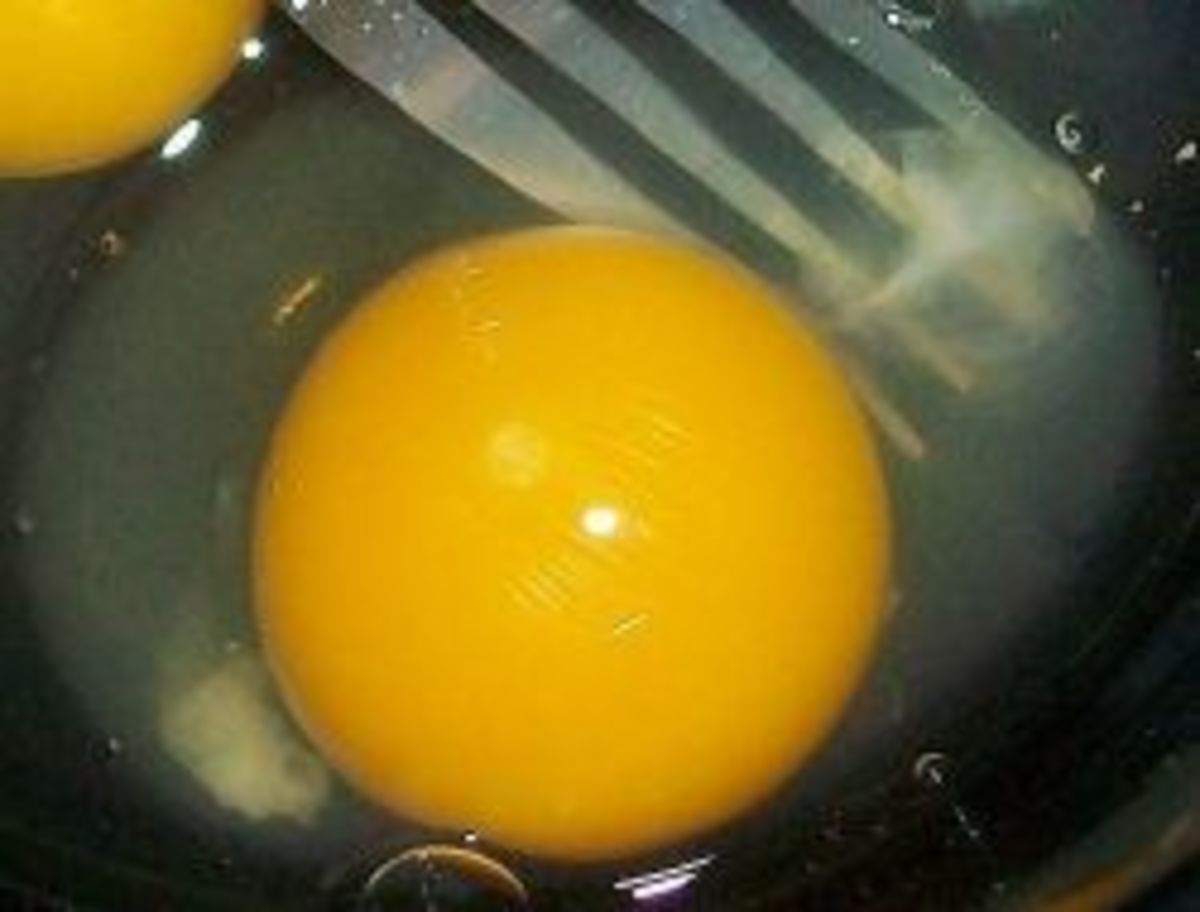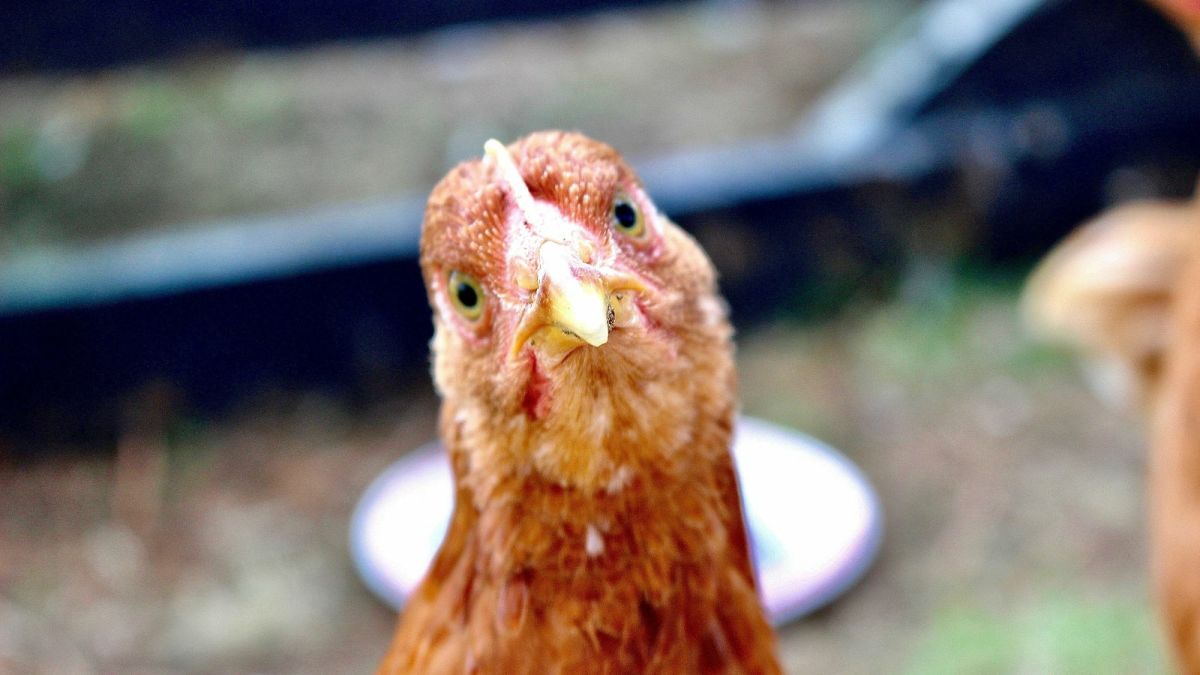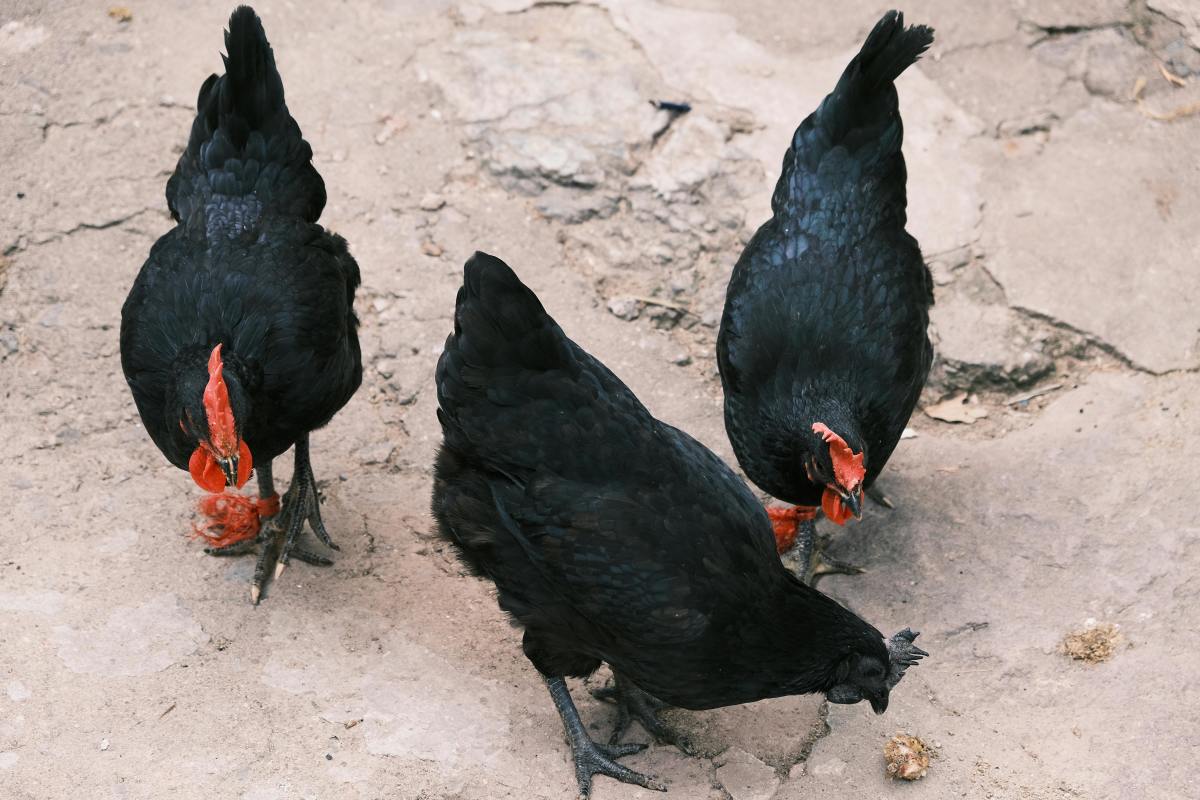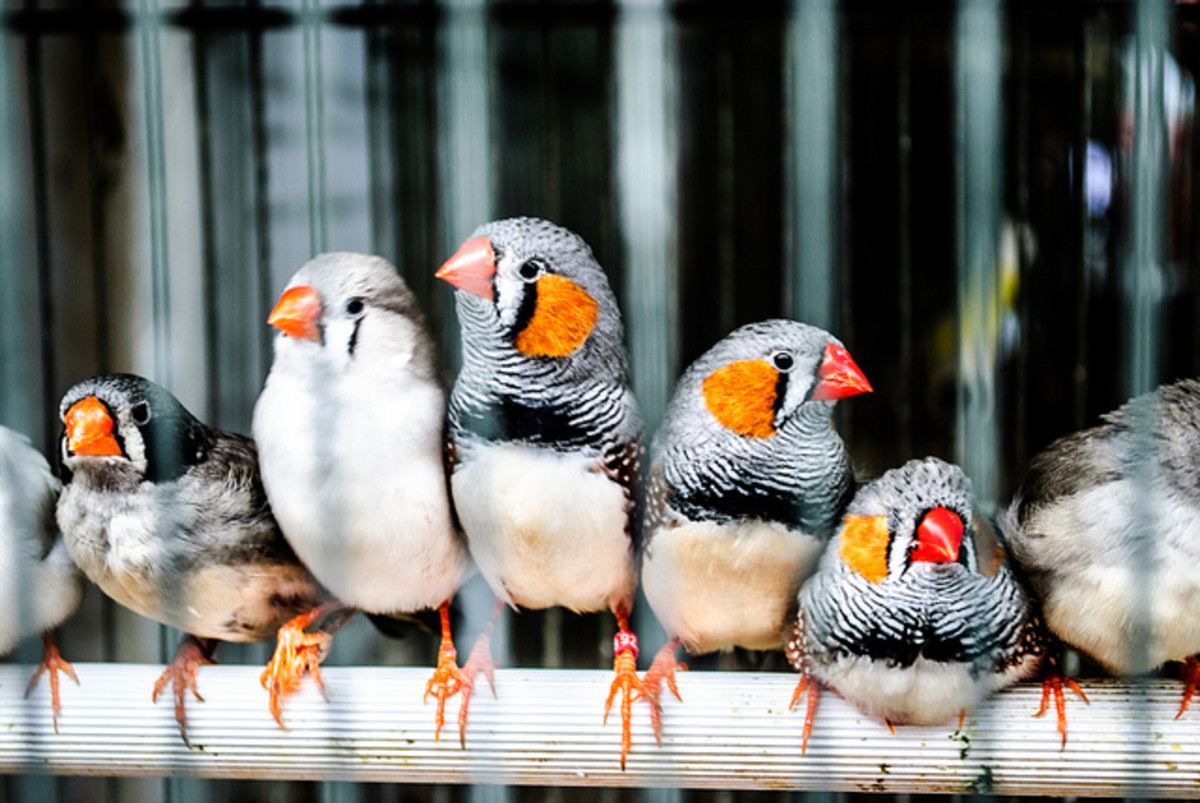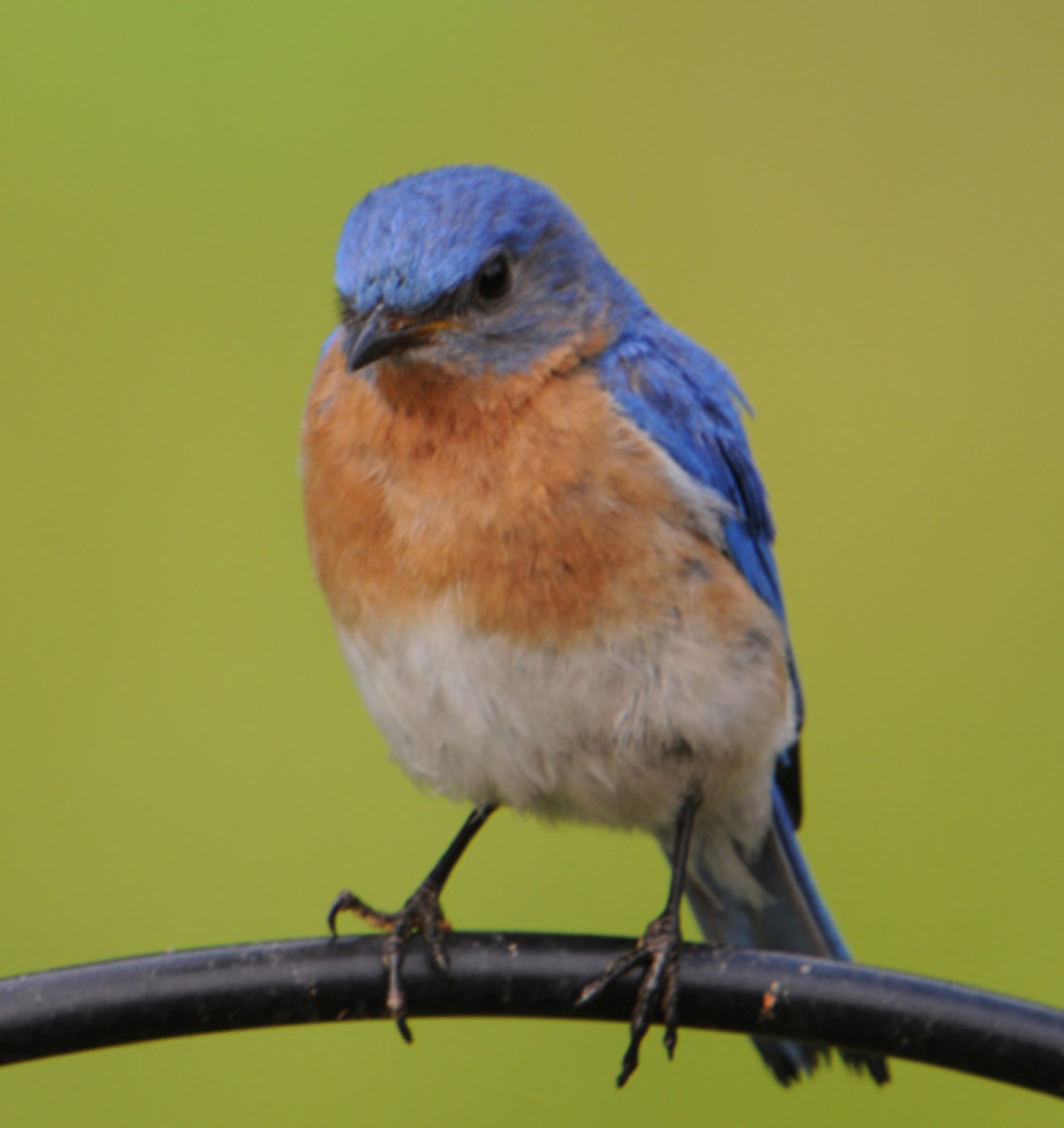Where do Chickens Come From?
Farming on an Industrial Scale

A World of Chickens
In the present era, there are roughly 7 billion humans on the planet, and to try to contemplate such a number is a truly mind boggling task, almost beyond comprehension. But it’s not just the fact that there 7 billion of us alive today; if you were to rewind just ten years, then you would find that there were a billion less people around. Such a huge increase is not just mind boggling; it’s frightening not just for us but also the rest of life. For the first time, many of us around the world are deeply concerned about just how much more the population will increase, how much more the Earth can take and what the consequences will be for biodiversity.
But what is truly astounding is that we are not even the most numerous vertebrate, there is a species of animal, very familiar to us whose population is three times greater than ours, the humble chicken. However, the majority of these Birds are condemned to a life in tiny cages, as densely and tightly packed together as it is possible to be.
Could you imagine if they ever acquired human intelligence and rose up like the apes did in ‘Rise of the Planet of the Apes’, they would have the largest army ever assembled, and we Humans would stand little chance. But fortunately for us, the chances of that happening are very remote indeed. Instead they live out their short lives without ever taking to the air, on account of having their wings clipped.
To me, they resemble some strange island bird that has lost the ability to fly; instead they just pace around the area given to them, which is usually a huge industrial barn, with floors covered in steel grating, illuminated by lights that never go out.
The majority of us rarely encounter these chickens for real, but whenever we step into our nearest Supermarket, the evidence is revealed to us. An entire section full of shelves of breasts and legs packed into a nice, neat, orderly arrangement, we rarely if ever think of the individual that piece of breast or leg once was.
A Male Red Jungle Fowl
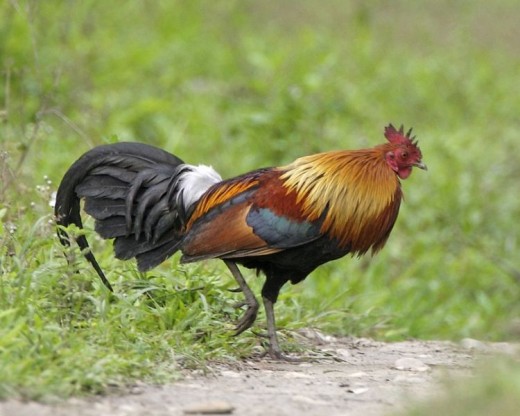
And the Female
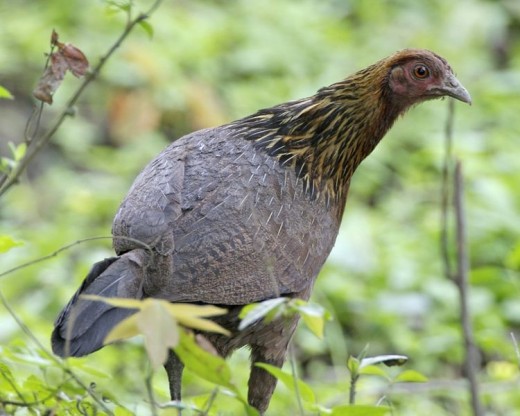
Meet the Ancestors
Once upon a time, there was no such thing as a chicken; instead you had their wild ancestors- the red jungle fowl. Remarkably they still exist, living in the bamboo forests of India and Southeast Asia. They dash across the forest floor like small dinosaurs, using their powerful curved beaks to toss leaves aside and probe for anything that might lie underneath. Understandably for a creature that shares its home with tigers and leopards, they roost in the trees, tucking their head under a wing. If they happen to be disturbed, then they will protest loudly.
The red jungle fowl’s enemies include cats, big and small, enormous pythons and of course human hunters who declare that they taste like chicken. However, despite intensive hunting pressure down the millennia, they have somehow survived, whilst many of their close relatives have succumbed to extinction. It’s truly remarkable that these wonderful birds have roamed in the same forests for millions of years. They have achieved their survival, against the odds through a surprising level of intelligence, their fecundity and luck.
More on the Red Jungle Fowl
- Red Junglefowl - What Is a Red Junglefowl
Detailed bird profile of the red junglefowl: appearance, foods, habitat, behavior and reproduction. Includes tips for how to attract red junglefowl to your backyard. - Red Junglefowl - Wikipedia, the free encyclopedia
- ARKive - Red junglefowl videos, photos and facts - Gallus gallus
Learn more about the Red junglefowl - with amazing Red junglefowl videos, photos and facts.
Creation of a New Life
Origin of the 'Chicken'
Around 8000 years ago, people started bringing chickens into their villages, but it’s not entirely clear why. From evidence, it seems unlikely that they were utilised as food at this point. Instead, the evidence indicates that they were probably used for cockfighting initially and also as some sort of oracle to predict the future. Basically the chicken was poked, prodded and pulled apart, in a certain way, and the people would examine the bones for holes and divots to interpret their future. Big holes were good, and small holes were bad. This method of fortune telling is as old as the evidence of the first domestic chickens. If predicting the future wasn’t their original use, then it must have followed close behind whatever it was.
Soon, this rather bizarre culture spread all across Asia, everywhere chickens were taken for their supposed foresightedness. Among the people of Chota Nagpur, India chickens are only ever used for this purpose and are never consumed, as its considered taboo. The same rules apply for the Vedda people of Sri Lanka, the Sabimba people of Malaysia and several different tribes on the Solomon Islands.
The practice of using chickens as oracles is not confined to Asia. The culture has been recorded across much of Africa and has also reached parts of the New World such as Bolivia. In a general sense, all of these cultures agree that the greatest value of the chicken is an oracle, then for cockfighting, whilst food is regarded as more of an incidental use.
Establishing Dominance
The Wild Bird Within
The knowledge that we have of the red jungle fowl can give us a rather interesting insight into the minds of scientists. To this day, we know very little about what they eat and their exact population size. But we do know a great deal about their breeding strategy. In the last five years, scientists have discovered that the female red jungle fowl prefers to mate with males that call louder when frightened, and also with males that have large combs. Incidentally, it’s not thought that the size of the wattles is of any significance. The males, on the other hand prefer to mate with females that they know well.
This behaviour has endured among their domestic descendants. Chickens still experience fear, even if they see the shadow of a hawk. The females are still as just as fussy over the males, and will organise themselves into a strict pecking order. The males are still aggressive to each other, and will fight given the opportunity. The familiar crow that we've all heard at some point in our lives is the male announcing his presence or warning of danger. The females cluck though, is more of a mystery. One theory postulates that the cluck is the females indicating contentment, but we don’t know for certain. Chickens are very smart, in their own special way. They have the ability to recognise up to 100 different chicken faces, a very useful skill when you live in a strict hierarchical society.
Over the centuries, certain physical attributes have become favourable in different places. For example, in certain areas, the birds have been bred purely for food, which means increasing their size. In others, prolific layers of feathers are preferred. But more than often, people have selected aggressiveness in cocks to ensure that they will kick each other to death, essentially duping them into thinking that a female bird is nearby.
- http://www.unleashed.org.au/animals/chickens.php
A website that dispels the myth that chickens are just mindless farm animals.
An Age Old Tradition
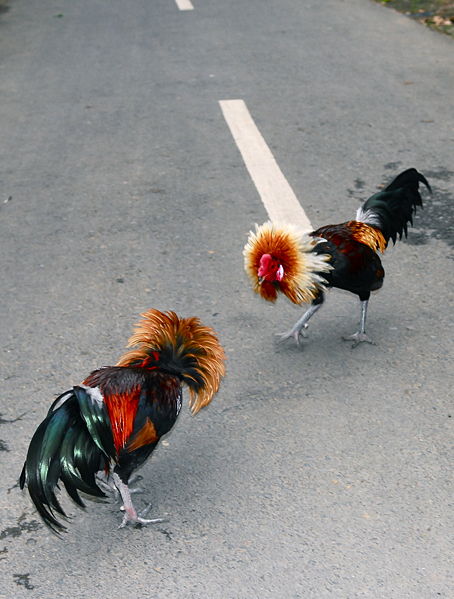
More about the extraordinary find in Chile
- Chicken Bones Suggest Polynesians Found Americas Before Columbus | LiveScience
A Website reporting the discovery of chicken bones in Chile, that predate Columbus, thus proving proving the Polynesians reached the New World before the Spanish.
Cockfighting
Wherever chickens were farmed, so cockfighting was practised; while scientists were mostly interested in studying the chickens breeding cycle, it seems that humans in general preferred the aggressive nature of the chicken. Perhaps that says more about our psyche than anything else. Many modern chicken breeds owe some of their peculiar traits for use as fighters. These breeds tend to be weak flyer's, have long necks, small wings and strong muscles.
To this day, cockfighting divides opinions, but it seems more than clear that in the past, it once satisfied some sort of deep seated blood lust in our species. Just because, cockfighting is no longer as widespread, does not mean that the bloodlust has vanished. Today’s equivalents, you could argue are cop shows, violent movies and violent sports. We are a species full of strange paradoxes, so cruel on one hand and yet capable of unbelievable acts of kindness and altruism on the other. Maybe deep down, we desire conflict that is simple and offers a simple resolution, cockfighting filled both criteria.
Chickens not only give us an insight into our minds, they can also help us to track our history. Over time, they have travelled with us, out of their southern Asian homeland to the furthest corners of the planet. One of the most contentious debates at present, regarding human history is whether Pacific islanders managed to reach the New World before the Europeans. There is a sight in Chile that has yielded chicken bones that predate the arrival of the Spanish conquistadors.
As time progressed, chickens came to be regarded in a whole new light, beauty. In Japan, a variety was bred with a 6 inch tail; another had a call that lasted 90 seconds. But it was in Victorian Britain, that the greatest diversity of chickens could be found. They gave the birds colourful and striking names such as Redcap chicken, Silkie, Sebright and Old English game.
An Old English Game Rooster and Hen
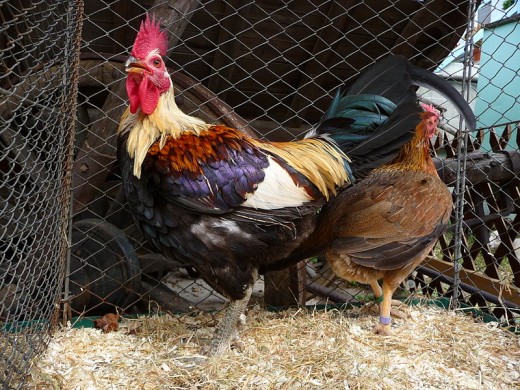
More on Battery Farms
Change in Values
The biggest change in the history of the chicken began in the USA, at the onset of the Industrial Revolution. It was a change so profound, that it would ultimately lead to the large industrial scale battery farms of today. Around this time, the value of the chicken changed, cultural desire gave way to thoughts of industrialism. Firstly, the chickens were moved indoors into barns, given constant light and force fed. The farmers even went so far to breed for particular genes to help promote greater fecundity, it worked, and it worked well. In a short space of time, the chicken population surpassed the human population.
Today, the chickens that spend their lives in ‘factories’ are twice the size of their wild ancestors and produce 80 times as many eggs a year. However, despite the changes wrought by mankind, they still have traces of wildness. They still fear unknown shadows, they still fuss over mates and they are as aggressive as ever. Chicken breeders to this day, still continue to produce new forms and varieties; it seems that we have become bound by fate to each other.
This is just as well, because chickens offer an invaluable window into our past and reveal a part of our psyche that we normally do not like to acknowledge. However, 8000 years after the first chickens were taken from the jungle. Their wild ancestor- the red jungle fowl still roams free, sharing its home with tigers, buffaloes and elephants. They serve as reminders of the chickens origins, and perhaps even our own.


